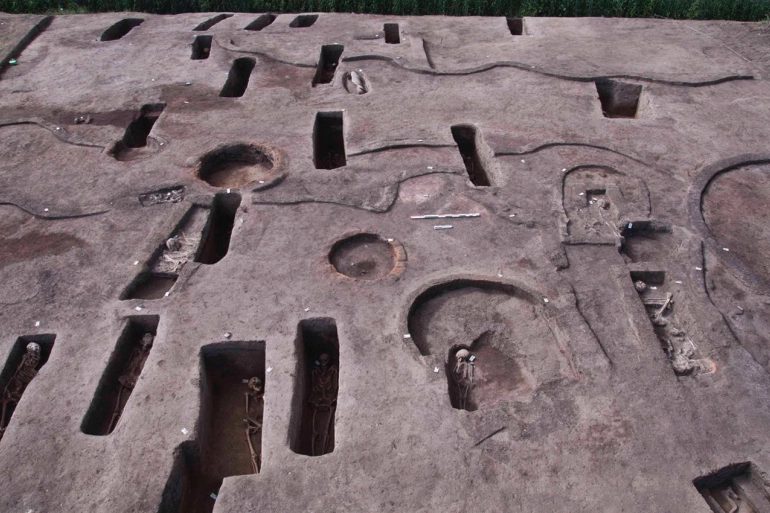Egyptian archaeologists recently discovered 110 tombs in the Nile Delta, the oldest of which dates back 5,000 years to the pre-dynasty period.
Al Jazeera reported on April 29, Egypt’s Ministry of Tourism and Antiquities said in a statement on the 27th, the tombs are located in the Egyptian capital Cairo, about 150 kilometers north-east of the province of Deghliye, of which 68 from the 3300 BC period of the Poto civilization Five from the Naqada III period in 3100 BC, and 37 from the Hicksos dynasty, which was founded by the Hicksos who migrated from West Asia to Egypt around 1800 BC.
Archaeologists in Egypt say the findings could help shed light on two important transitional periods in ancient Egypt.
Salima Iqram, an Egyptologist at the American University in Cairo, says the cemetery is valuable because it comes from different historical periods.
“Now archaeologists are trying to explore from these tombs how the ancient Egyptians and the Hicksos co-located and to what extent the Hicksos adopted the traditions of ancient Egypt.”
The tombs of the Budu civilization were oval-shaped, and the vast majority of the remains were in the left-hand fetal position, with their heads facing west.
The Hicksos-era tombs were mostly semi-rectangular, with the remains more stretched and their heads facing west.
Cylindrical and pear-shaped containers were also found in some of nakada’s tombs. The excavation also found remnants of stoves, mud-brick foundations, pottery, as well as amulets and jewelry, the statement said.
Archaeological discoveries have been announced several times in Egypt recently, including several tombs.
The Associated Press commented that Egypt hopes to help its tourism industry recover.



